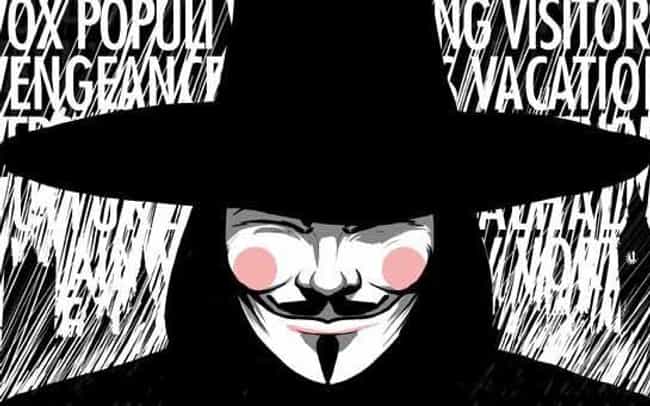
 V for Vendetta. What does the man behind the mask stand for? It is quite clear that his intentions are to bring to light the government's utter control of its people and manipulation of power. But what exactly is it that he aims to accomplish? Is it revenge? To bring chaos? Glory? For me, V's greatest lesson to teach us is to stand against corruption. Generally we see mutiny as as a bad thing, but what if, for once, it provided the exact medium to change the world we live in? V for Vendetta is about freedom and having basic human rights. How does V accomplish this? By creating mayhem in a world that teaches structure. From the story line to the artistry, V for Vendetta expresses a need for change. Although it seems V is not entirely successful in his endeavors, it raises the need for freedom to express oneself, and more importantly, educate on why personal freedom is an essential human right. Chaos, without some sort of control, will always remain to be chaos. This is true as we see V complete his mission in shutting the government down, only to cause riots among the people who refuse to see the chains they are undeniably in. An interesting way we see this theme unfold is in the creative technique displayed in each panel. Throughout the novel, it is clear that the artist's focus was using an array of colors to create vivid, loud panels that cause the eye to move all over the page. These busy pictures contribute to the idea that this world that Moore has created is hectic and in need of order. Reading it for myself was difficult since my eyes didn't truly know what to focus on. I believe that the bright coloring is meant to say, "Hey! Look at me!" so that we pay attention to the true crimes that occur throughout the story. Each panel is so intensely designed. This remains true from beginning to end in V for Vendetta, which further establishes the story's need for some type of stabilization.
V for Vendetta. What does the man behind the mask stand for? It is quite clear that his intentions are to bring to light the government's utter control of its people and manipulation of power. But what exactly is it that he aims to accomplish? Is it revenge? To bring chaos? Glory? For me, V's greatest lesson to teach us is to stand against corruption. Generally we see mutiny as as a bad thing, but what if, for once, it provided the exact medium to change the world we live in? V for Vendetta is about freedom and having basic human rights. How does V accomplish this? By creating mayhem in a world that teaches structure. From the story line to the artistry, V for Vendetta expresses a need for change. Although it seems V is not entirely successful in his endeavors, it raises the need for freedom to express oneself, and more importantly, educate on why personal freedom is an essential human right. Chaos, without some sort of control, will always remain to be chaos. This is true as we see V complete his mission in shutting the government down, only to cause riots among the people who refuse to see the chains they are undeniably in. An interesting way we see this theme unfold is in the creative technique displayed in each panel. Throughout the novel, it is clear that the artist's focus was using an array of colors to create vivid, loud panels that cause the eye to move all over the page. These busy pictures contribute to the idea that this world that Moore has created is hectic and in need of order. Reading it for myself was difficult since my eyes didn't truly know what to focus on. I believe that the bright coloring is meant to say, "Hey! Look at me!" so that we pay attention to the true crimes that occur throughout the story. Each panel is so intensely designed. This remains true from beginning to end in V for Vendetta, which further establishes the story's need for some type of stabilization.
Comments
Post a Comment